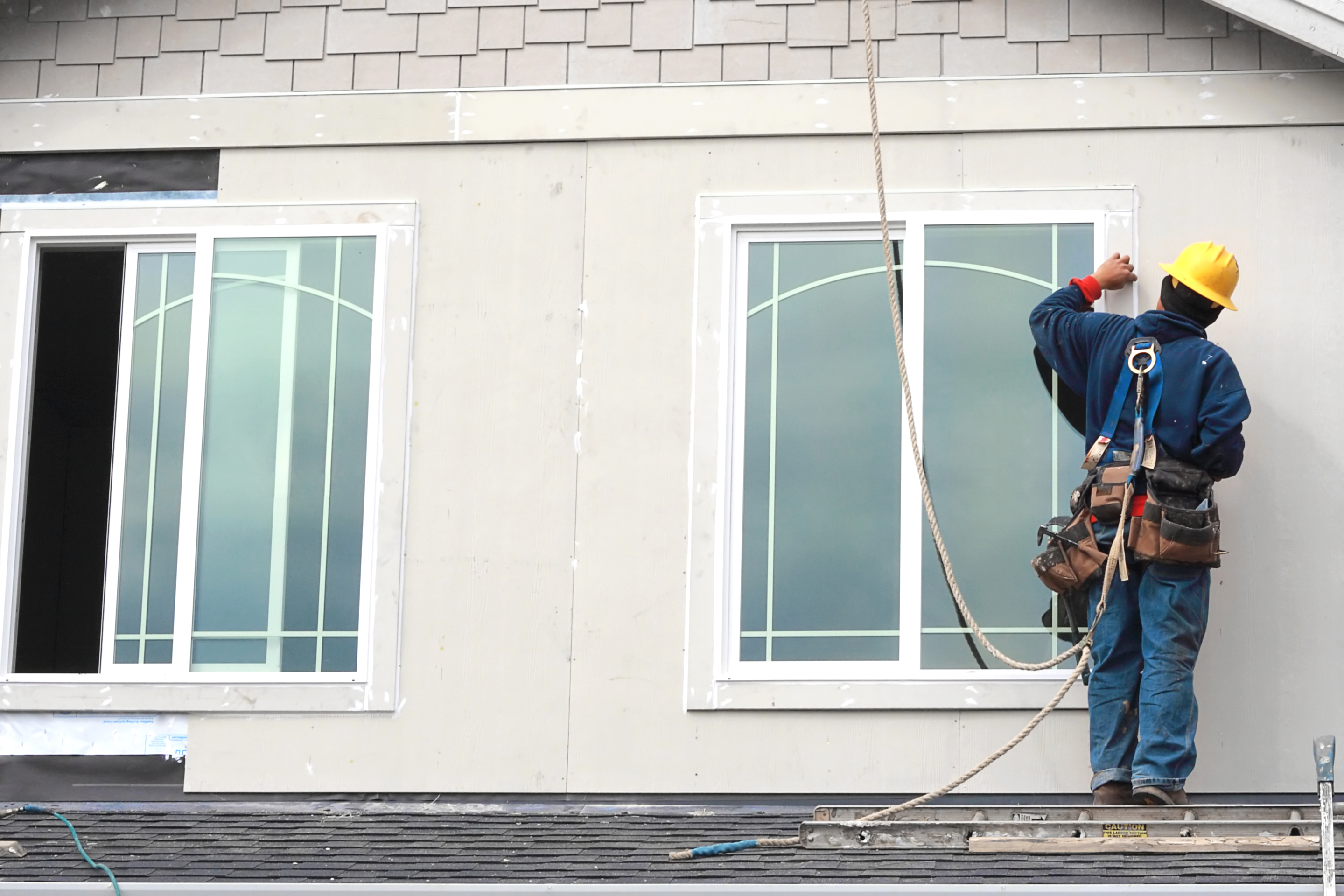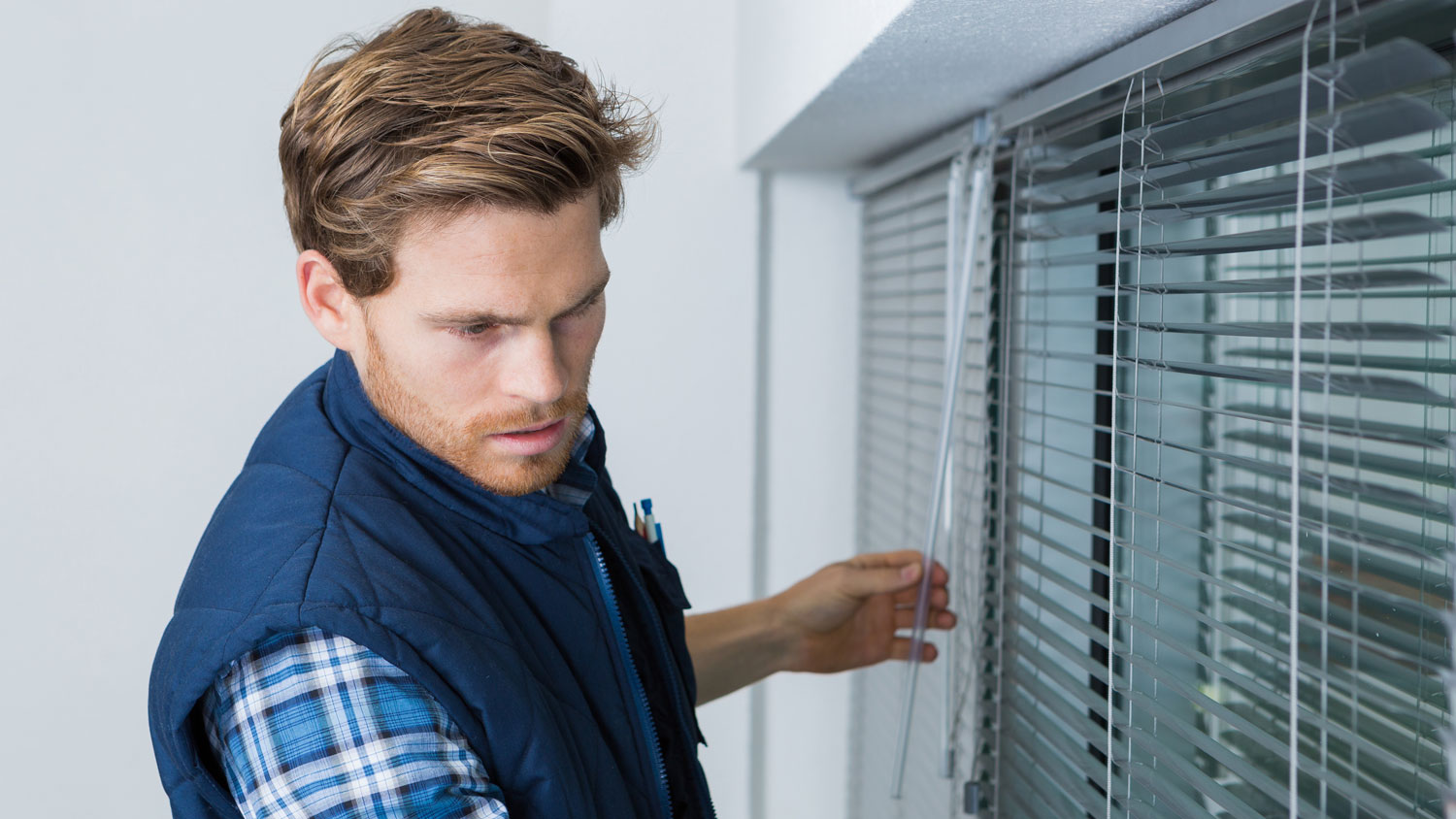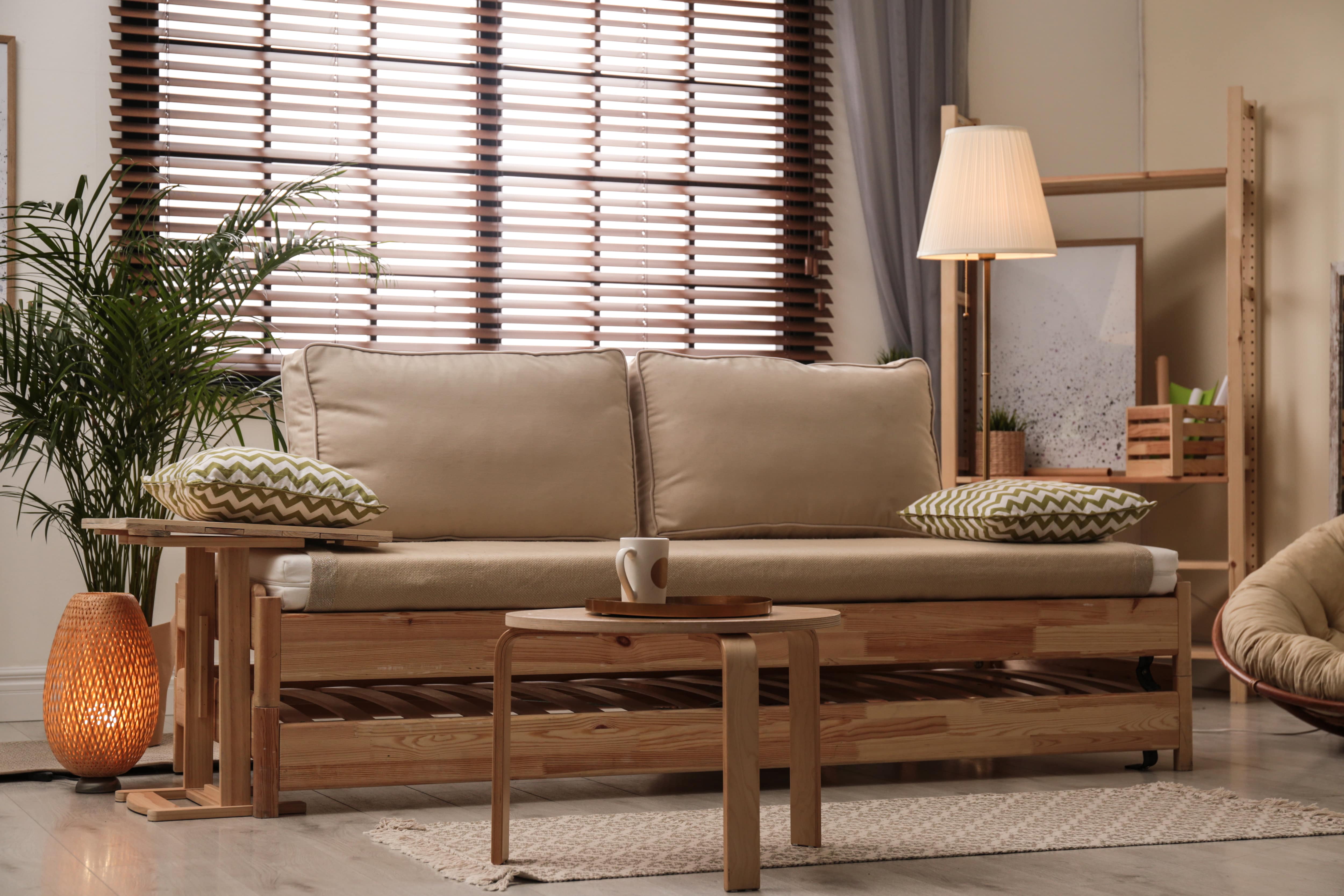
Discover the average blind cleaning cost, what impacts the price, and how to save. Get transparent estimates to keep your blinds spotless and your home fresh.
Solar screens cost an average of $160 per window, with most homeowners paying between $80 and $280. Your price depends on the window size, screen material, and the complexity of the installation.


The cost to install solar screens ranges from $30 to $600, with the average cost being $160.
The main cost drivers are window size, material, and labor.
Custom shapes, higher UV protection, and multi-story installs increase price.
Professional solar screen installation ensures a proper fit and long-term durability.
Solar screens can enhance home efficiency, improve curb appeal, and increase resale value.
To install solar screens, homeowners pay an average of $160 per window, with a range from $30 to $600, depending on the size, material, and installation. The average cost per square foot ranges from $5 to $8, making solar screens a budget-friendly option for enhancing energy efficiency and comfort.
Solar screens offer a practical solution for reducing heat, glare, and UV exposure in your home. In this cost guide, we’ll break down the factors that impact pricing, what you can expect for your project, and how to maximize the best value for your investment.
The size and quantity of solar screens you need directly influence your total project cost. Larger windows require more material and labor, while installing screens on multiple windows can sometimes lead to package pricing or volume discounts. Custom-sized screens for non-standard or specialty windows will cost more than standard options due to additional fabrication and fitting.
| Window Size | Dimensions (In.) | Average Cost per Screen | Cost Range |
|---|---|---|---|
| Small | 24 x 36 | $40 | $40–$75 |
| Medium | 36 x 48 | $85 | $70–$160 |
| Large | 48 x 60 | $160 | $120–$280 |
If your home has many windows, installers often offer a reduced rate per screen or a bundled total. However, each custom-shaped or oversized window can substantially increase your overall cost.
Solar screens are commonly priced by the square foot, with most homeowners paying between $5 and $8 per square foot. To estimate your total project cost, measure each window’s height and width, multiply them to get the square footage, and then multiply by the cost per square foot. Add installation labor to your total if it is not included in the per-screen price.
For example, a 36-inch by 48-inch window is 12 square feet. At $6 per square foot, that screen would cost $72, excluding labor and additional features.
Choosing the right type of solar screen impacts your upfront cost, durability, and performance. Let’s look at the most common options.
| Screen Type | Description | Average Cost per Screen | Pros | Cons |
|---|---|---|---|---|
| Standard | Fixed, basic mesh | $40–$120 | Affordable, easy to install | Basic UV protection |
| Heavy-duty | Thicker, reinforced mesh | $70–$200 | Strong, longer lifespan | Higher upfront cost |
| Retractable | Roll-up or pull-down design | $120–$280 | Flexibility, can remove when not needed | Complex install, more expensive |
| Magnetic | Snap-on magnetic frame | $60–$180 | Easy DIY, removable | May not fit all windows |
| Custom-shaped | For arched, bay, or specialty windows | $120–$300+ | Matches unique windows, tailored fit | Highest cost, longer lead time |
Standard screens are the most affordable and common, but homeowners seeking durability or flexibility should consider heavy-duty or retractable options. Custom-shaped screens, while pricier, are essential for non-rectangular windows.
Solar screens come in a variety of materials, each with its own price point, level of UV protection, and durability. The material you choose will affect both the look and longevity of your screens.
| Material | UV Blockage % | Average Cost per Sq. Ft. | Durability | Color Options |
|---|---|---|---|---|
| Fiberglass | 65–75 | $4–$5 | Moderate | Black, gray, limited colors |
| Polyester | 80–90 | $5–$7 | Good | Black, gray, and some custom |
| PVC-coated poly | 80–95 | $6–$8 | Excellent | Many colors, custom options |
| Aluminum | 65–75 | $5–$7 | High (can corrode | Black, silver, bronze |
Darker colors, such as black, often cost less and provide better outward visibility, while specialty or custom colors may add to your total. Mesh density (such as 80% or 90% solar blockage) also affects cost, with higher blockage screens costing slightly more due to denser weaving.
Where you live and where you install solar screens on your home can change the price you pay. Urban areas often have higher labor rates, while rural regions may see added travel fees or limited installer options. In hot climates like the South or West, higher demand for solar screens may drive prices up, but more competition can also mean better deals.
Solar screen installation is less expensive for first-floor windows. Expect higher costs for second-story or hard-to-reach windows, as extra equipment or time may be needed. Installing screens on patios, sunrooms, or custom areas, such as bay windows, can require special hardware or custom fitting, which increases the overall cost.
Several factors influence the final cost of installing solar screens, from labor rates to optional upgrades.
Window contractors, handypersons, or specialty installers install solar screens. Minimum service fees are standard, especially for small jobs. Labor rates range from $40 to $80 per hour, or $35 to $90 per window, depending on region and complexity. Labor is often bundled in the per-window price but may be itemized for larger or custom projects.
Multi-story homes, difficult access, or custom-shaped screens can increase labor costs due to the added time and specialized equipment required. In high-demand areas, expect local window pro costs to be at the upper end of the range.
Permits are rarely required for solar screen installation, but some municipalities or HOAs may have restrictions or require approval for exterior modifications. When needed, permit fees range from $25 to $100. Always check local requirements before starting your project to avoid unexpected fees or delays.
Upgrades such as retractable or motorized screens, custom frame colors, decorative trims, or reinforced frames add to your total cost. Security features and pet-resistant screens are also available, at a premium. Specialty hardware or finishes can cost an additional $20 to $100 per window, depending on your selections.
Several additional factors can affect labor costs for solar screen installation. Consider the following when planning your budget:
Complex window shapes (arched, bay, oversized) require custom fabrication, increasing the price.
Accessibility challenges (multi-story, hard-to-reach windows) can add labor or equipment rental fees.
Old screen removal, window cleaning before install, and delivery may incur extra charges.
Some projects include design consultation or inspection fees for custom work or HOA compliance.
Post-installation cleanup and debris removal, if not included, incurs a small additional fee.
If required by local codes or HOA, inspection costs can range from $50 to $150.
When budgeting for solar screens, be sure to factor in the costs of warranties, ongoing maintenance, taxes, and insurance.
Most solar screens come with manufacturer warranties ranging from five to 15 years, covering defects in materials or workmanship. Some installers offer extended warranties for an additional $20 to $50 per screen. Warranties provide peace of mind and can add long-term value, especially in areas with harsh weather conditions.
Solar screens can reduce your cooling bills by 10% to 30%, depending on your climate and the orientation of your windows. Retractable or motorized screens may have small ongoing electricity costs, less than $10 per year. Most screens last 10 to 15 years before needing replacement, so factor in future window screen replacement costs when budgeting for your project.
Routine maintenance includes cleaning with mild soap and water, inspecting for tears, and tightening any loose hardware. DIY cleaning is inexpensive, but professional window cleaning services cost $5 to $12 per window. Annual maintenance costs are low, unless repairs are required.
Solar screens are sometimes covered under homeowners' insurance as part of your dwelling or exterior coverage. However, standard wear and tear is not covered—only damage from covered events, such as storms, is covered. Solar screens do not impact insurance premiums. If damaged, you can file a claim, but weigh the deductible against the cost of repair or replacement.
Installing solar screens yourself sounds like a great way to save money, but it requires careful measuring, special tools, and time. Getting it wrong can drive up your costs—not to mention wasting an entire weekend. Hiring a pro helps ensure a proper fit, avoid mistakes, and protect warranties. It is always a great idea to get quotes from local window screen installers for comparison.
A professional installer removes much of the uncertainty from the process and helps ensure everything fits and performs as intended.
Pros ensure screens are sized and installed correctly, which improves performance and appearance.
Installers bring specialized tools and hardware, along with experience working with various screen types and frames.
Arched, oversized, and second-story windows are more complicated and safer to handle with a pro.
DIY mistakes can void warranties or reduce coverage, depending on the product and installer requirements.
Proper tensioning, framing, and mounting can improve longevity and overall durability.
DIY solar screen installation is most achievable for simpler setups, especially if you’re comfortable with careful measurements and basic tools.
Installing standard, ground-floor windows: Rectangular first-floor windows are typically the easiest and safest for DIY.
Using pre-made kits, including magnetic options: These can reduce fabrication and fitting work compared to custom builds.
Handling one or two windows at a time: Smaller DIY projects are easier to manage, helping reduce errors, frustration, and repeated work.
Sometimes, you can repair your solar screens instead of replacing them. Let’s examine when each option is suitable and its associated costs.
Minor issues, such as small tears, loose frames, or faded mesh, can often be repaired. If the damage is extensive, the screen is outdated, or the fit is poor, replacement is recommended. Consider the age of your screens and whether they’re still under warranty. If repair costs approach 50% of the price of new screens, replacement is often the better value. Full replacement costs more but delivers the latest materials, best fit, and full warranty coverage.
| Service | Average Cost per Screen | Cost Range | When to Choose |
|---|---|---|---|
| Repair | $20 | $10–$50 | Small tears, minor frame issues, newer screens |
| Replace | $160 | $40–$280 | Extensive damage, poor fit, outdated, or old screens |
Installing solar screens can deliver an estimated ROI of 25% to 40% over their lifespan, based on energy savings and reduced cooling costs. Most homeowners recoup their investment in three to six years, especially in sunny climates. Compared to other energy upgrades, solar screens are cost-effective and offer a relatively quick return on investment.
Beyond savings, solar screens improve comfort by reducing glare and keeping interiors cooler. They also protect furnishings and floors from fading due to UV exposure. Many homeowners appreciate the added curb appeal and privacy that solar screens provide. For families, pet-resistant and security options add a layer of safety and durability.
To keep your project within budget, consider the following cost-saving tips:
Get multiple quotes from local pros to compare pricing and services.
Select standard sizes and materials to avoid additional custom charges.
Install solar screens on south- and west-facing windows first for maximum impact.
Consider DIY installation for ground-floor, standard windows if you have the skills.
Schedule installation during off-peak seasons for potential discounts.
Maintain screens regularly to extend their lifespan and avoid premature replacement.
Share how many windows you’re screening and any rough measurements.
Discuss the screen type and material you prefer, as well as your UV-blockage goal.
Explain your budget range and what you’re prioritizing, such as cost, durability, privacy, or glare reduction.
Flag any access issues, like second-story windows or hard-to-reach spots.
Discuss add-ons and logistics, like custom colors, pet-resistant mesh, removal of old screens, HOA rules, and timing.
Home is the most important place on earth, which is why Angi has helped more than 150 million homeowners transform their houses into homes they adore. To help homeowners with their next project, Angi provides readers with the most accurate cost data and upholds strict editorial standards. We extensively research project costs to develop the pricing data you see, so you can make the best decisions for you and your home. We rely on reputable sources, including the U.S. Bureau of Labor Statistics, academic journals, market studies, and interviews with industry experts—all to ensure our prices reflect real-world projects.
Want to help us improve our cost data? Send us a recent project quote to [email protected]. Quotes and personal information will not be shared publicly.
From average costs to expert advice, get all the answers you need to get your job done.

Discover the average blind cleaning cost, what impacts the price, and how to save. Get transparent estimates to keep your blinds spotless and your home fresh.

Get expert insights on blind repair cost, including average prices, key cost factors, and ways to save. Learn what impacts your blind repair estimate.

Cellular shades are more cost-effective and energy-efficient than many other window treatments, but they’re also harder to clean. Learn how to easily clean these blinds at home.

Cleaning your blinds can seem tricky, but you can tackle the task with basic household supplies. Find out the best way to clean your blinds.

High-tech ultrasonic cleaning takes your dirtiest window coverings and makes them new again. Use our guide to learn about the process, costs, and advantages of ultrasonic cleaning and get helpful tips to find the best cleaning service near you.

Not sure who to hire to clean blinds or shades? Learn which blind cleaning pros to call, how they work, and how to choose with confidence.